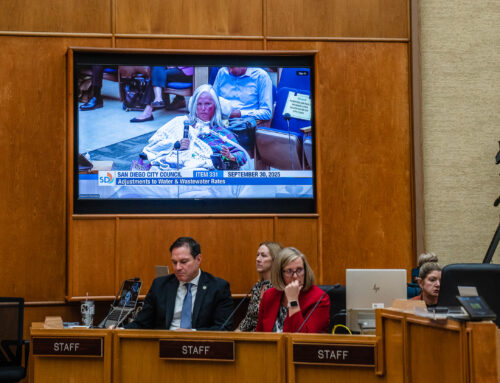Nature-based solutions struggle to gain traction in Brazil
October 27, 2025
Unlocking funding and attracting investors remain major hurdles as the topic takes center stage in Brazil’s bioeconomy discussions ahead of COP30
/i.s3.glbimg.com/v1/AUTH_37554604729d4b2f9f3eb9ad8a691345/internal_photos/bs/2025/A/Q/ixq84lTBOaES5nxdwWuQ/ricardo-gravina-keiny-andrade-valor.jpg)
Nature-based solutions (NbS) projects—such as agroforestry systems and urban green infrastructure—have gained prominence in climate finance discussions but continue to face structural and financial barriers in Brazil. To unlock funding and attract investors, experts are calling for integrated risk-reduction mechanisms that combine guarantees, segmented insurance, and blended financial instruments.
The topic is among the key items on the bioeconomy agenda for COP30, which will take place in Belém in November. Nature-based solutions harness the power of ecosystems to address socioeconomic and environmental challenges—such as climate change and water security—while generating income and preserving biodiversity. Examples include reforestation initiatives, mangrove restoration, and regenerative pasture systems.
Maria Netto, executive director of the Climate and Society Institute (iCS), notes that NbS encompass diverse initiatives, and that obstacles vary depending on the type of project and its target audience. “Small farmers, for instance, have less access to credit and face higher costs,” she says.
According to her, there are also region-specific risks—particularly in the Amazon, where unclear land tenure and the illegality of certain activities discourage investors. Ms. Netto argues that a combination of insurance instruments, performance guarantees, and standardized contracts is needed to create a “package” that reduces risk and increases investor confidence. “The ‘blending’ has to be right, otherwise it causes headaches,” she cautions, emphasizing that concessionary funds—from public or philanthropic sources—should be used to test innovative models rather than simply subsidize credit.
Ricardo Gravina, co-founder of Climate Ventures, agrees that expanding capital flow remains the greatest challenge and highlights the role of the insurance sector in addressing it. “In consolidated sectors such as renewable energy, there’s legal certainty and predictability,” he explains. “But in nature-based solutions and other biodiversity businesses, not all risks have been mapped yet, so investors are still hesitant.”
To close these gaps, several innovation laboratories are working on new approaches. One example is the Nature Investment Lab (NIL), which brings together multiple sectors and technical expertise to attract investment. Mr. Gravina, who serves on NIL’s executive secretariat, underscores the importance of risk guarantees. “One effective mechanism is the ‘first loss’ structure, in which a development bank or similar institution absorbs the initial loss in case of default, creating a safety cushion for other investors,” he says.
Another organization addressing the financing challenge is the Global Innovation Lab for Climate Finance (the Lab), which designs and tests financial mechanisms aimed at attracting private capital to climate-related projects, particularly in developing countries. The Lab’s global manager, Amanda Brasil-Leigh, notes that the flow of resources into such initiatives remains limited because the risk-return balance is still far from ideal.
“Investments tend to be smaller, scattered, and long-term, making it difficult to find investors willing to take them on,” she explains. Ms. Brasil-Leigh cites an ongoing project in India that is testing parametric insurance—a model that pays compensation based on predefined parameters such as rainfall intensity, wind speed, or earthquake magnitude, rather than on-site loss assessments. “It’s a model that’s still in its early stages, but it has been well received,” she says.
She also points to a case in the Philippines that combines mangrove restoration with insurance coverage for coastal communities. The project’s structure allowed part of the profits from restoration to be shared with insurers. However, she notes, widespread adoption has been limited due to difficulties in pricing the risks. In Colombia, a similar initiative seeks to conserve the páramos, high-altitude ecosystems that naturally filter water—but faces the challenge of determining who should pay the insurance premium.
Experts agree that the main bottleneck for insurance in nature-based solution projects lies in defining the premium value and identifying who pays for it. According to Caio Barreto, sustainability representative at consulting firm WayCarbon, the diversity of projects makes it difficult to calculate consistent values. “The operational risks are very different, and it’s hard for insurance companies or traditional banks to evaluate them,” he says.
However, Jéssica Bastos, director of the Private Insurance Superintendence (SUSEP), argues that it is possible to define the insured interest and determine who pays the premium—whether it’s the financing institution, the beneficiary community, or a company linked to the ecosystem. She adds that predictability can also be improved by incorporating nature itself into insurance strategies. “In many cases, protecting an ecosystem means strengthening it to act as a natural risk-reduction mechanism,” she explains.
Ms. Bastos adds: “When we talk about ecosystem recovery—such as insurance for mangroves or coral reefs—we need to identify who has a vested interest. If you think about a large hotel that could be affected by storm surges if the coral reef or mangrove is destroyed, that business has a direct interest in maintaining the ecosystem.”
The SUSEP director also notes that spreading risks through reinsurance, risk letters, and the expansion of the insured base is essential to managing catastrophic risks. The agency issued a new regulation in December 2024 establishing criteria for classifying insurance products as sustainable and, in September, created a working group with representatives from multiple sectors to develop “holistic solutions.”
Although this market is still in its early stages in Brazil, insurers are beginning to design new products, says Cláudia Prates, sustainability director at the National Confederation of Insurers (CNseg). Progress, she adds, will depend on the maturity of nature-based solution projects and closer collaboration between banks and the insurance sector.
“When these projects move forward and banks begin to view insurance as a risk mitigator, we’ll already have products ready to offer,” she says. Ms. Prates also points out that pulp and paper companies such as Suzano and Klabin have long relied on insurance for their planted forests, and that the next step for insurers is to create products tailored for native forests.
In the Brazilian market, BB Seguros launched a product in October 2024 aimed at restoring legal reserve forests and permanent preservation areas (APPs) in the event of fire damage. If a claim occurs, rural producers receive compensation to restore the insured area upon presenting invoices for the necessary inputs.
The insurance product, designed to protect biomes in Goiás, Minas Gerais, Mato Grosso, Mato Grosso do Sul, Paraná, Rio Grande do Sul, and Santa Catarina, offers basic fire coverage. Compensation amounts are determined based on the size of the area and the maximum average indemnity limit established for each biome.
When contacted, BB Seguros declined to comment on the initiative.
Translation: Todd Harkin
Search
RECENT PRESS RELEASES
Related Post



